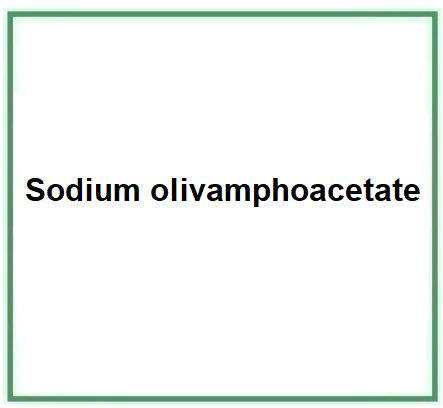Sodium olivamphoacetate is a chemical compound, sodium salt formed from olive oil, starches, N-[2-[N-(2-hydroxyethyl)-N-(carboxymethyl)amino]ethyl]-
The name describes the structure of the molecule:
- Sodium: indicates that the compound contains sodium ions (Na+).
- Olivamphoacetate: derived from the combination of the words "olive," "ampho," and "acetate." "Olive" refers to the fact that the surfactant has detergent properties, while "ampho" indicates that it can act as both an acid and a base. "Acetate" refers to the presence of an acetate group (CH3COO-) in the molecule.
The synthesis process takes place in different steps:
- Raw material: Oleic acid (C18H34O2), a fatty acid derived from olive oil.
- Reaction of oleic acid with sodium hydroxide (NaOH) to obtain the sodium salt of oleic acid, called "sodium oleate" (C18H33O2Na).
- Raw material: Iminodiacetic acid (C4H7NO4), an aminocarboxylic acid.
- Reaction of iminodiacetic acid with sodium hydroxide to form the sodium salt of iminodiacetic acid, called "sodium iminodiacetate" (C4H6NO4Na).
- Combination of sodium oleate and sodium iminodiacetate to obtain sodium olivamphoacetate
It appears as a yellowish liquid.

What it is used for and where
Cosmetics
It is an amphoteric surfactant that exerts a gentle cleansing action with foaming and thickening properties for shampoo, bath foam and personal care formulations.
Cleansing agent. Ingredient that cleanses skin without exploiting the surface-active properties that produce a lowering of the surface tension of the stratum corneum.
Hair conditioning agent. A large number of ingredients with specific purposes can co-exist in a hair shampoo: cleansers, conditioners, thickeners, mattifying agents, sequestering agents, fragrances, preservatives, special additives. However, the indispensable ingredients are the cleansers and conditioners as they are necessary and sufficient for hair cleansing and manageability. The others act as commercial and non-essential auxiliaries such as: appearance, fragrance, colouring, etc. Hair conditioning agents have the task of increasing shine, manageability and volume, and reducing static electricity, especially after treatments such as colouring, ironing, waving, drying and brushing. They are, in practice, dispersing agents that may contain cationic surfactants, thickeners, emollients, polymers. The typology of hair conditioners includes: intensive conditioners, instant conditioners, thickening conditioners, drying conditioners.
Surfactant - Cleansing agent. Cosmetic products used to cleanse the skin utilise the surface-active action that produces a lowering of the surface tension of the stratum corneum, facilitating the removal of dirt and impurities.
Surfactant - Foam booster. It has the effect of introducing gas bubbles into the water and affects the cleaning process by helping to spread the cleanser. Since sebum has an inhibiting effect on the bubble, more foam is produced in the second shampoo.
- CAS: 361381-09-1
- EINECS: 609-209-7
- IUPAC: Glycine, N-(2-aminoethyl)-N-(2-hydroxyethyl)-, N-olive-oil acyl derivs., monosodium salts
Where to buy it: FARMALABOR Via Palermo 23 - 20090 Assago (MI) - Italy
![]() Sodium olivamphoacetate
Sodium olivamphoacetate 


